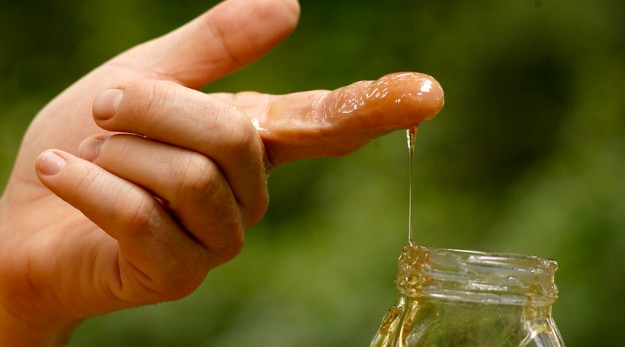Honey in Apitherapy
 Honey has been used in food and cosmetics since ancient times. Practitioners of apitherapy still believe in the natural forces of honey. Scientists from all over the world have investigated this bee gold. (at the bottem you can find links of some of those studies)
Honey has been used in food and cosmetics since ancient times. Practitioners of apitherapy still believe in the natural forces of honey. Scientists from all over the world have investigated this bee gold. (at the bottem you can find links of some of those studies)
In honey you can only find natural sugars, such as fructose and glucose, which makes it an interesting sweetener for those who want a diet with less refined sugars. Honey is naturally rich in sugar so it can better be avoided by diabetics.
Honey is very easily digestable by humans because it has already been digested several times in the stomach of the honeybees. The bee repetedly 'throws up' the honey to reduce the moisture content and ripen the honey. Afterwards he puts this drip of honey into a cell of the beehive to thicken slowly by time.
Interesting literature:
- Molan, P.C., et al. (1999). The role of honey in the management of wounds. Journal of Wound Care, 8(8), p. 415-418.
- “Honey is a new approach to fighting antibiotic resistance: How sweet it is.”
- Stephens, J., (2006). The factors responsible for the varying levels of UMF® in mānuka honey. University of Waikato, Hamilton, New Zealand, p. 1-268.
- Cooper, R.A., et al, (1999). Antibacterial activity of honey against strains of staphylococcus aureus from infected wounds. Journal of The Royal Society of Medicine, Volume 92, p. 283-285.
-
Münstedt, K., et al. (2009). Bee products and their potential use in modern medicine. Journal of ApiProduct and ApiMedical Science. 1 (3): 57-63.



